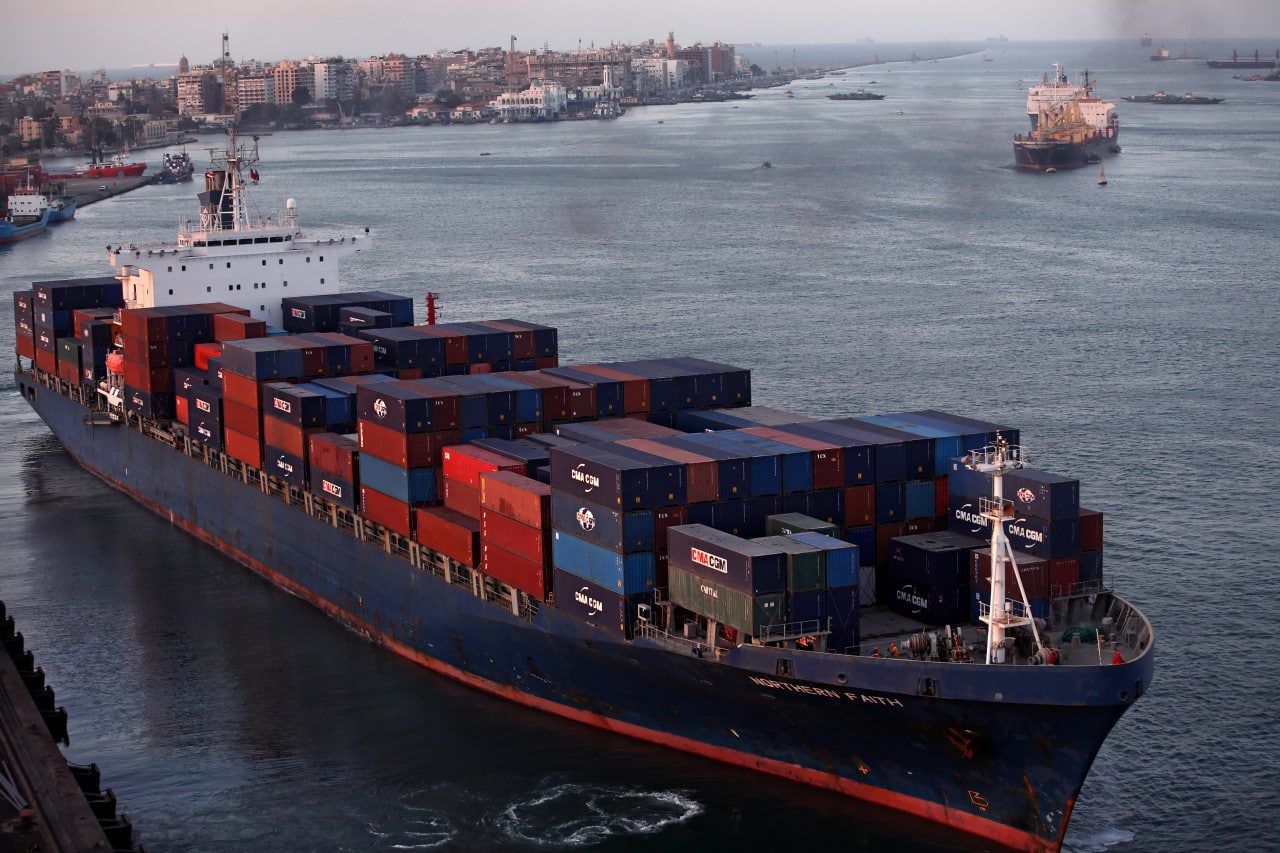
About two months after becoming president, Abdel Fattah al-Sisi announced a huge project dubbed ‘the new Suez Canal,’ promising a huge boost of income for Egypt and drawing comparisons in the media to Gamal Abdel Nasser, when he championed the Aswan High Dam project more than 40 years ago.
The project promised to upgrade and expand the Suez Canal, an important trade route between Europe and Asia and one of Egypt’s largest sources of foreign currency, and the surrounding region and cities. The project entails deepening parts of the current canal and digging an additional 72 km parallel to it to allow two-way traffic. In its second phase, it will also have six new tunnels dug under the canal to allow a connection between mainland Egypt and the Sinai Peninsula and an upgrade of the harbour area to create a hub around it.
The first of several promised ‘national projects,’ al-Sisi urged Egyptians to unite completely behind his vision and support the project, shunning foreign investment and funding. Instead, the project offered funding only to Egyptians (in the country and overseas) through an initial public offering on the stock market.
Following his call, millions of Egyptians rushed to buy shares in the project, which offered an attractive fixed 12 per cent rate after they mature in five years, to provide the US $8.4 billion needed to widen the canal and produce six new tunnels and a technology park in Ismailia city. According to the Egyptian Center for Public Opinion Research (Baseera), over half of those investors drew the money from their bank deposits.
People began to compare general-turned-president al-Sisi to Nasser, the charismatic Egyptian president who, after following a similar path to the presidency, nationalized the Suez Canal at the age of 38 and challenged Western countries’ control of the waterway. This drew strong support for Nasser and united people behind his promise of economic growth from the Suez Canal, especially after fighting off a failed invasion by Britain, France and Israel. Al-Sisi is fanning similar nationalist pride after snubbing the concerns of the United States and European Union about the coup that brought him to power. Both have also begun a nationwide crackdown against members of the Muslim Brotherhood.
Al-Sisi promised that his New Suez Canal would bring a similar much needed economic boost to the populous country’s failing economy. The project promises to create one million new jobs for Egyptians, who have long suffered from high unemployment.
Mohab Mamish, chairman of the Suez Canal Authority, promised that the project would more than double the annual revenue of the waterway, from US $5 billion to US $13.5 billion, by 2023. It would do this by allowing two-way traffic and decreasing the long waiting time for ships, allowing 87 vessels to transit daily, rather than the current limit of 49.
Widening the canal does not, however, necessarily mean that more trade will transit; that will depend on the volume of international trade. The Panama Canal, which is an important route for trade between Asia and the Americas, is also being upgraded to accommodate more traffic.
Limitations of accelerated pace

When Mamish first announced the project, the plan was to complete the digging of the new canal in three years. But, during the press event, al-Sisi stressed that they should complete the digging in just one year. The digging of the new canal and the widening of parts of the old canal are parts of a complicated process, and skeptics have raised concerns that shortening the timeline from 36 months to 12 months was unrealistic.
For security reasons, the military was appointed to oversee the whole project. Several companies would be involved in the project, but it will all be under the supervision of the army. The actual excavation was then awarded to a consortium led by Bahrain-based Dar al-Handasa, in which the Egyptian army’s engineering corps is a partner.
As soon as the announcement was made, television stations began broadcasting videos of bulldozers digging around the clock to meet the target. However, the tight deadline promised by al-Sisi meant that foreign companies had to be contracted to help in the digging – contrary to the original plan to depend solely on Egyptian firms – especially as the excavation quickly turned from dry digging into dredging when water was encountered early on.
Dredging – the removal of underwater mud and sand – is much more difficult and expensive than dry digging. The excavation was originally planned to be dry, but water began to seep into the new canal from the older waterway as the bulldozers began moving material. The contractors reportedly have to move more than one million cubic metres daily. This added unforeseen expenses to the project, increasing exponentially the cost of the new canal.
This has raised concerns about the quality of studies done before starting such a major project, or whether the studies had even been carried out. In addition to the unexpectedly high dredging expense, scientists have raised environmental concerns about the massive project. In late November 2014, a paper published in the journal Biological Invasions suggested that 350 invasive species have already made their way from the Red Sea to the Mediterranean through the old Suez Canal. Now, the new project risks doubling that number, further straining the Mediterranean ecosystem.
The new Suez Canal project, like the rest of the projects announced by al-Sisi, is large and ambitious. Skeptics warn that Egyptian presidents have a history of announcing large projects that never meet their targets, such as Hosni Mubarak’s Toshka project, which aimed to reclaim millions of desert acres for agriculture and is often regarded as a huge failure.
These grand projects capture the imagination of Egyptians, who have a long history of nationalist movements and strong support for the military. But, with al-Sisi’s strong backing by unquestioning media and the majority of citizens, he might not be held accountable should his grand projects fail to measure up to their ambitious promise.


